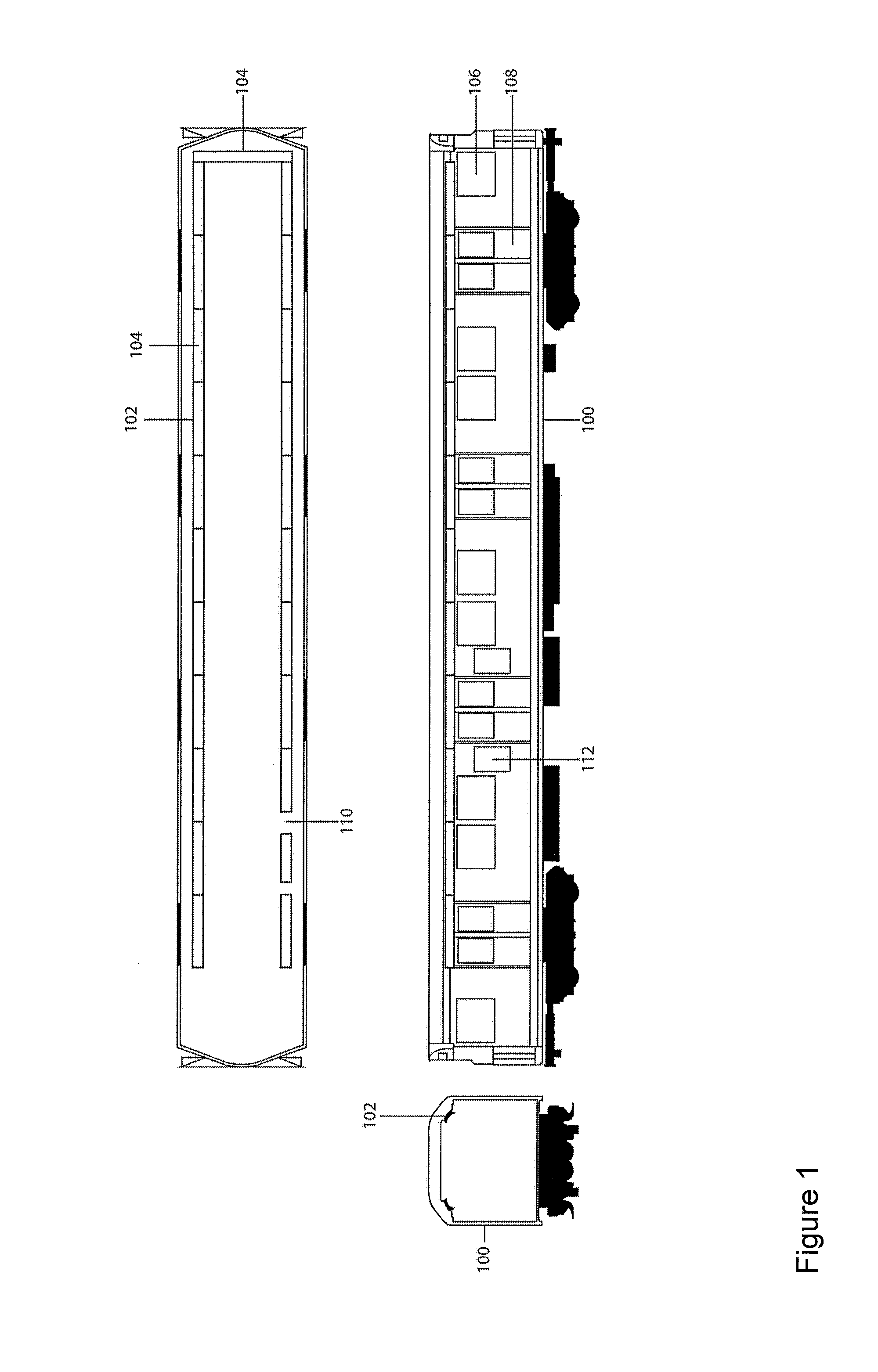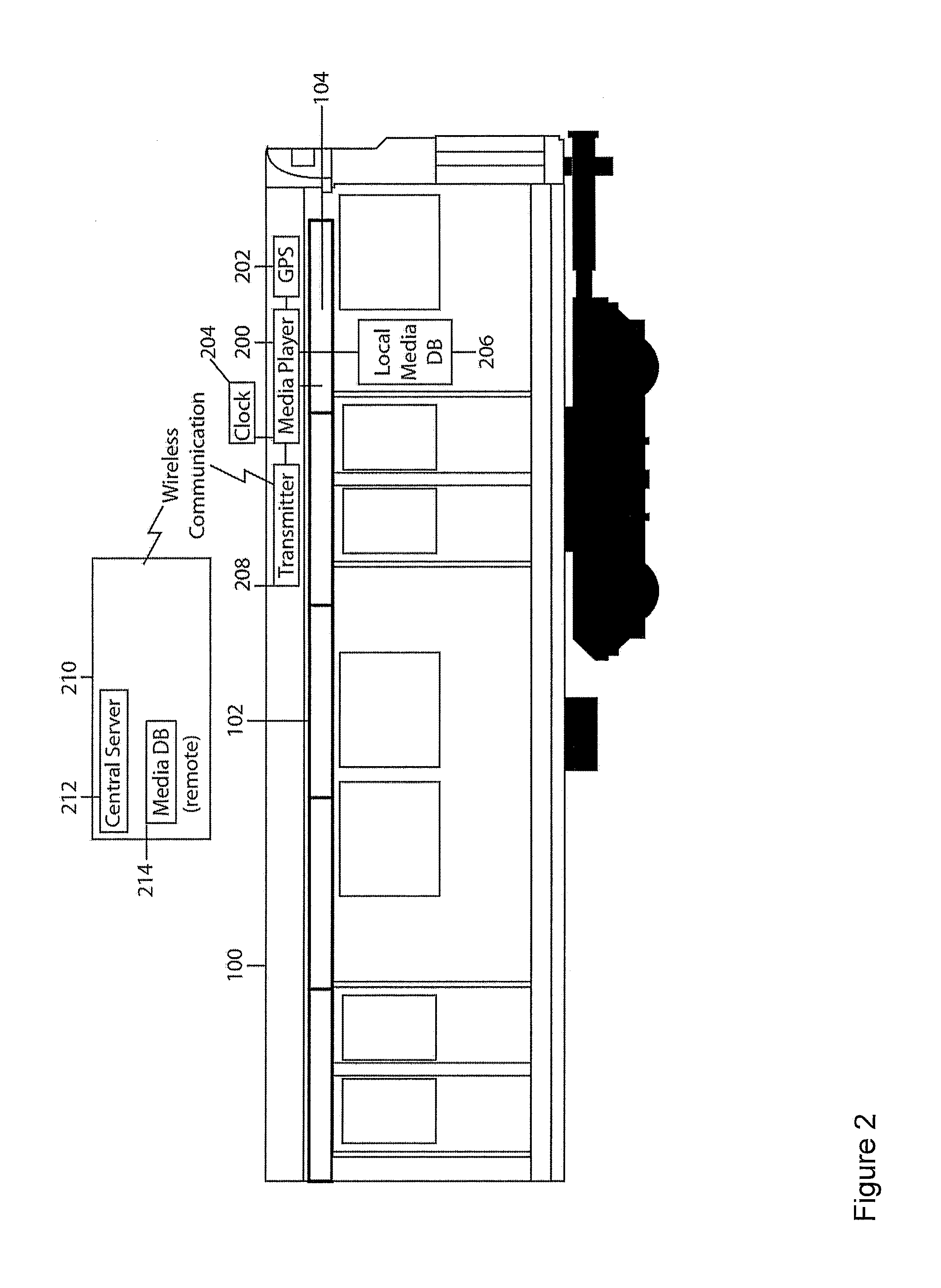Information Display System for Transit Vehicles
a technology for information display and transit vehicles, applied in traffic control systems, marketing, instruments, etc., can solve the problems of large waste of advertising forms, difficult for local advertisers to target their advertising to riders, and impractical methods for providing product information, including graphics
- Summary
- Abstract
- Description
- Claims
- Application Information
AI Technical Summary
Benefits of technology
Problems solved by technology
Method used
Image
Examples
example 1
Installation of a Location-Based Advertising System within Fleet of Transit Vehicles
[0129]A transit authority outfits its fleet of buses with the preferred system of the present invention. Within each bus is installed a media player and two arrays of digital displays, each comprising a continuous band of individual digital displays running the majority of the length of the bus above the windows, and whose displayed content is controlled by the media player. The media player on each bus communicates wirelessly with a remote control centre located within the headquarters of the transit authority.
[0130]For the 40-foot buses in the fleet, each of the arrays of digital displays consists of 6 LED displays, each measuring 70 inches in length, 11 inches in width and 2 inches in depth, and having a resolution of 1560×720 pixels and a 5000:1 contrast ratio. The LED displays are located so as to provide the appearance of a seamless band, or single display, running the length of each side of th...
example 2
The Use of Analytic Software in Conjunction with the Preferred System of the Present Invention
[0134]Each of the digital displays described in Example 1 additionally comprises two digital cameras used to collect analytical data using the INTEL® AIM Suite. When an advertiser has indicated that they wish to obtain analytic data regarding the riders viewing their advertisement on the bus, data is collected by the digital cameras when the specified advertisement is displayed on one of the digital displays. When advertisements are cycled throughout the digital displays along an array, the cameras for a given digital display are activated or de-activated as required so that analytical data is collected through each digital display on which the advertisement is shown. The collected analytic data is stored by the media player and after a specified period of time, the stored analytic data relating to the advertisement is transmitted to the advertiser.
example 3
The Use of Analytic Software as an Additional Advertisement Selection Criterion
[0135]In addition to the collection of analytic data for transmission to the advertiser, the digital cameras described in Example 2 may also be used to collect analytical data regarding the riders observing or within range of a specific digital display. When there are more advertisements stored and available for a given geographic area than there are digital displays within the bus, analytic data can be used to further select which of the advertisements are to be played based on the present riders viewing or in the vicinity of a digital display. Thus, if the analytic software determines that the majority of riders within a digital display are from a specific group, advertisements can be further selected that are of more interest to that specific group. This analytic data may also be used to override the standard advertisement rotation to focus particular types of advertisements on specific digital display...
PUM
 Login to View More
Login to View More Abstract
Description
Claims
Application Information
 Login to View More
Login to View More - R&D
- Intellectual Property
- Life Sciences
- Materials
- Tech Scout
- Unparalleled Data Quality
- Higher Quality Content
- 60% Fewer Hallucinations
Browse by: Latest US Patents, China's latest patents, Technical Efficacy Thesaurus, Application Domain, Technology Topic, Popular Technical Reports.
© 2025 PatSnap. All rights reserved.Legal|Privacy policy|Modern Slavery Act Transparency Statement|Sitemap|About US| Contact US: help@patsnap.com



